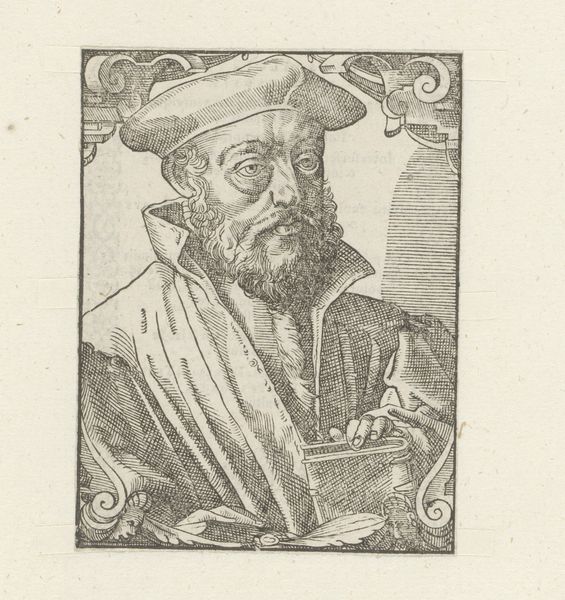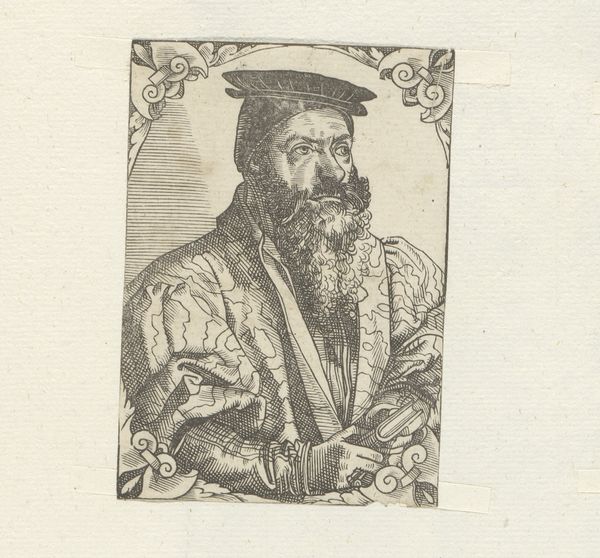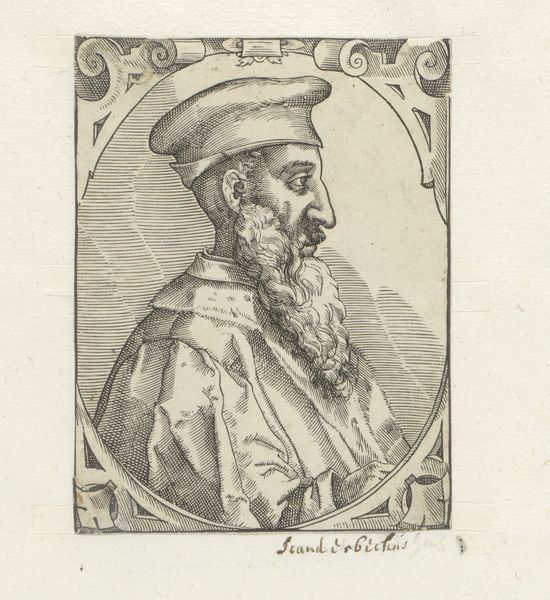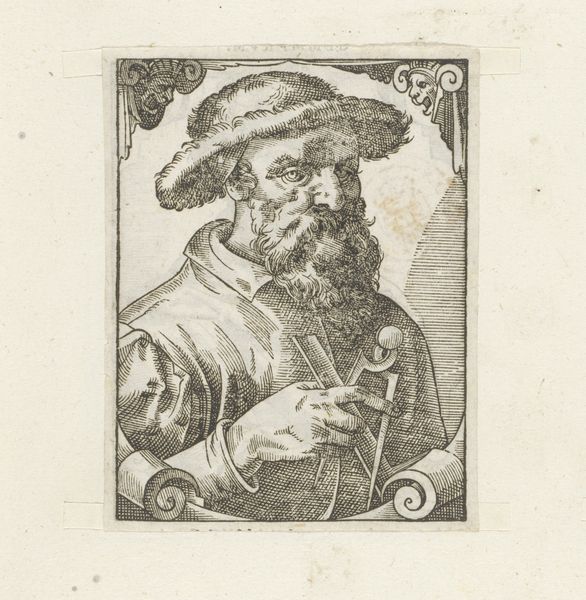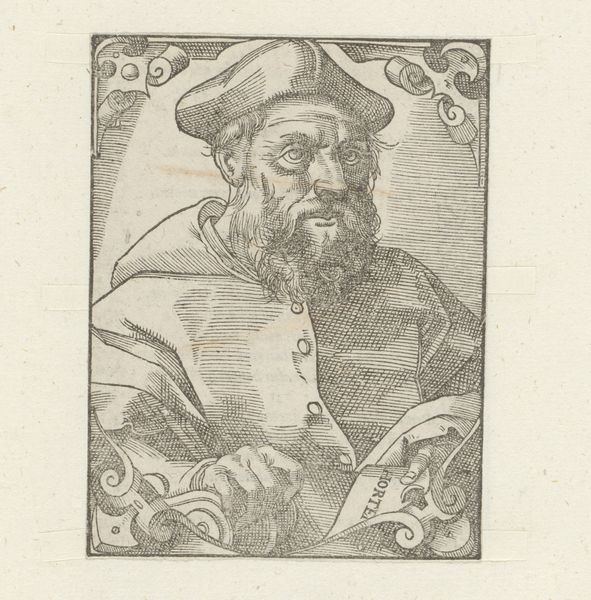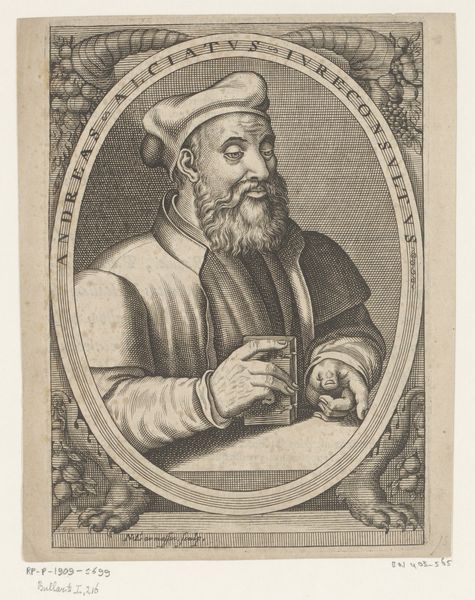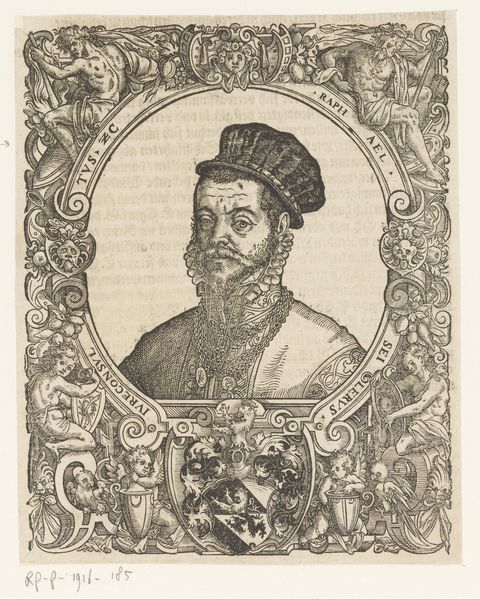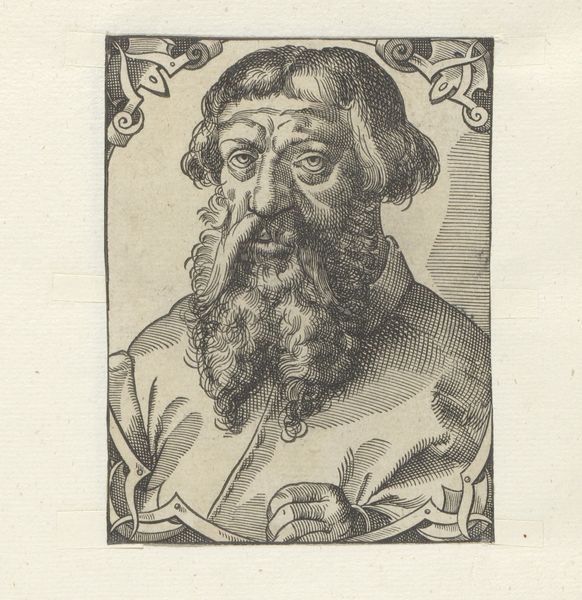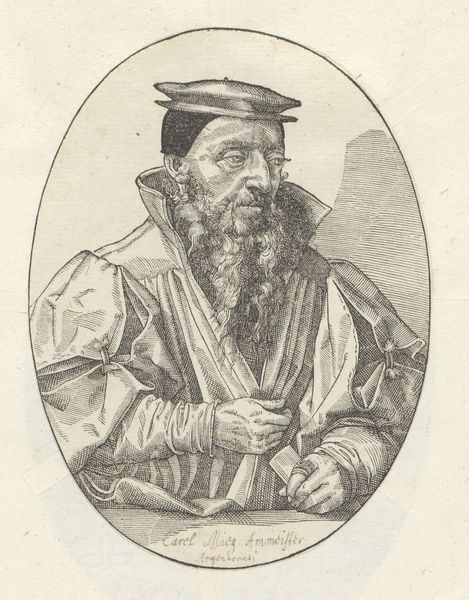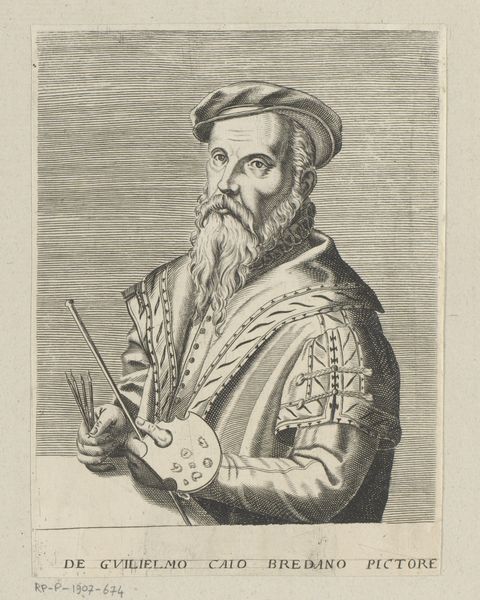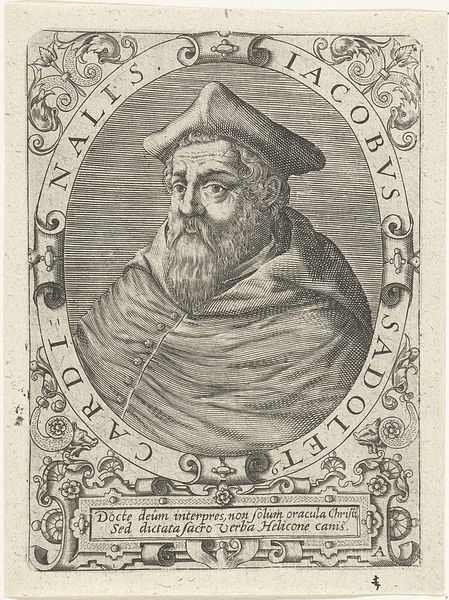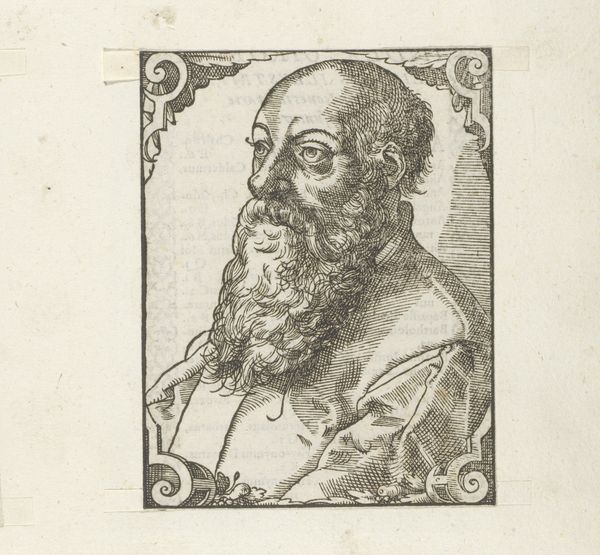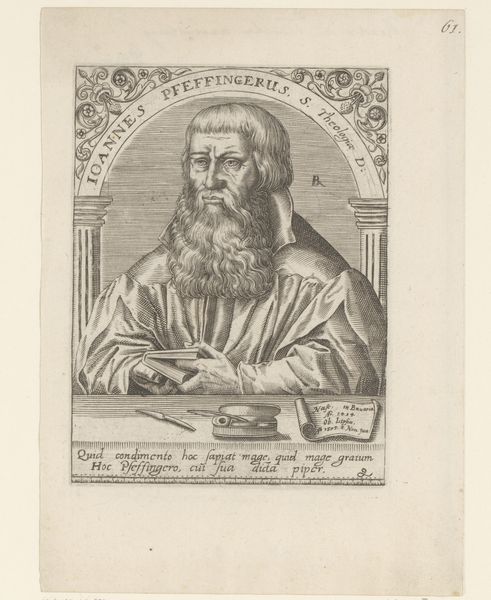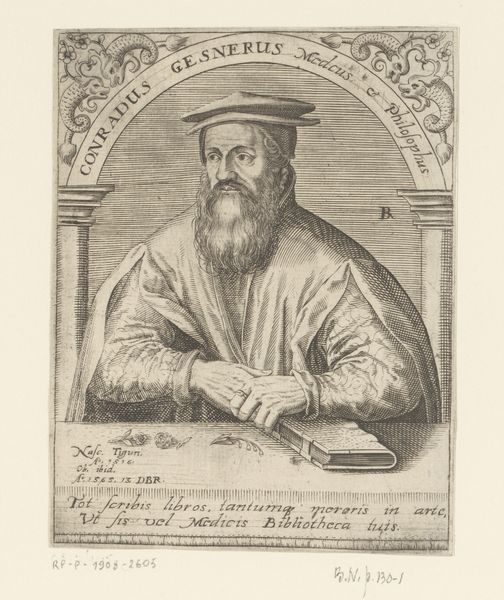
print, engraving
#
portrait
# print
#
11_renaissance
#
portrait drawing
#
engraving
Dimensions: height 117 mm, width 89 mm
Copyright: Rijks Museum: Open Domain
Curator: Ah, here we have an engraving titled "Portret van Titiaan," dating from between 1549 and 1584. The artist remains anonymous. Editor: It's rather striking, isn't it? There's a density to the lines that creates an almost textural quality despite its small scale. A pensive mood emanates from the figure. Curator: Precisely. Consider how the artist uses contrasting strokes to define Titiaan's face—deep, decisive lines around the eyes and mouth, suggesting age and wisdom. The framework too, note its dense embellishments which neatly encase the subject of the work. Editor: It's also the way light and shadow play across the composition, dictated entirely by the artist's strategic placement of those lines. What labor went into carefully incising each mark on the copperplate! The quality of the ink, the pressure applied to the press—these directly influence the final image and speaks of craftsmanship. Curator: Indeed. Semiotically, the details such as the simple cap, direct gaze, and framing embellishments speaks to a conscious construction of artistic identity, meant to signify gravitas and importance. A way to signal genius to contemporary audiences, the effect on viewers of a print like this would have been substantial. Editor: Right. But that identity isn't solely built on artistic "genius," is it? It’s built through physical toil. Engraving demanded immense physical dexterity, and let's not forget, the infrastructure required: the printer, the paper maker. Each reliant on the other to disseminate images and ultimately, reputations. Curator: A symbiotic system, unquestionably. And considering that its success hinges upon material elements adds another layer to the appreciation of the final form. Editor: It makes you consider that even a "simple" portrait on paper is a testament to much more than singular talent. Curator: Quite so. I see our perspectives have illuminated aspects one may not immediately consider. Editor: Agreed. Viewing with a sense of the labor allows us a deeper connection.
Comments
No comments
Be the first to comment and join the conversation on the ultimate creative platform.
